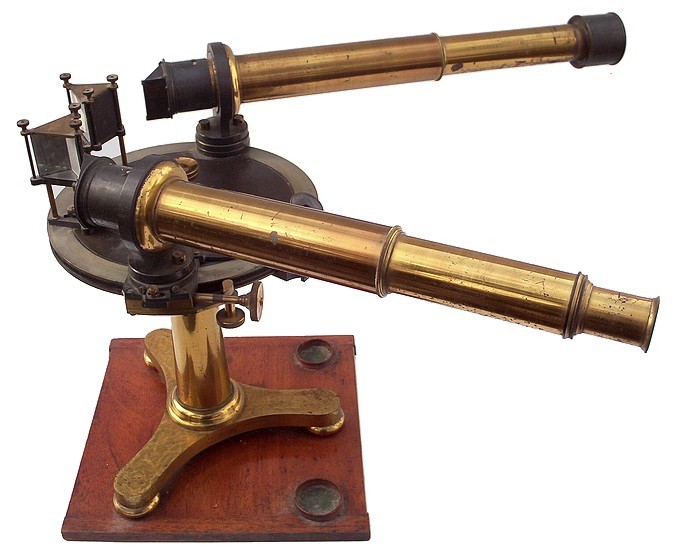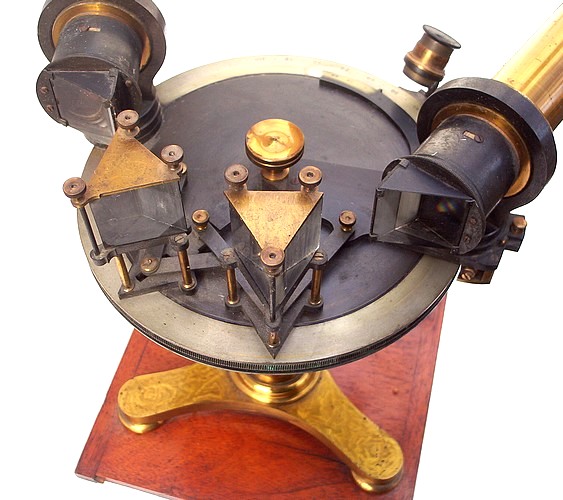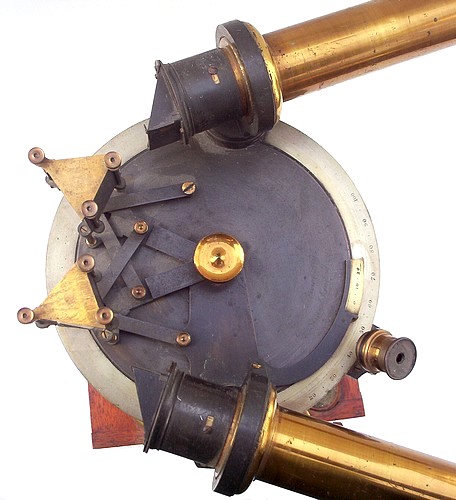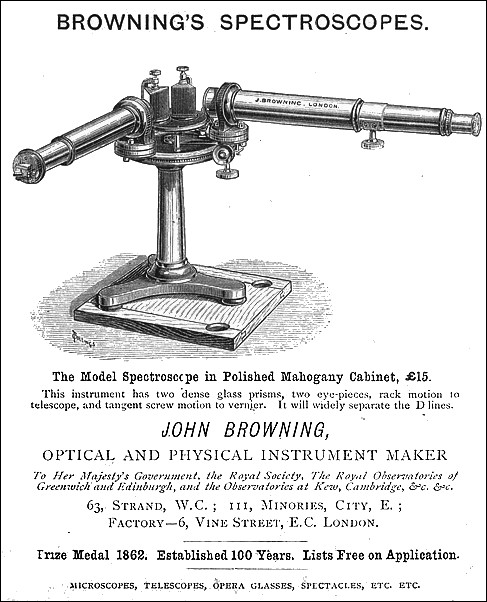


The arrangement of the four prisms relative to the telescope is automatically adjusted through a series of levers for minimum deviation at the observed frequency. For storage the spectroscope is provided with a mahogany case.

The following excerpt is from The Popular Science Review, H. Lawson Ed., 1871
Browning’s Automatic Spectroscope.—The principle of this ingenious instrument has been made the object of several rival claims, which seem to us to bare no foundation whatever. On the one band, Herr von Littrow claims for his son (lately deceased) the invention of the plan, and in confirmation of the claim points to a volume of the Proceedings of the Imperial Society of Vienna. On reference to this volume we find an automatic spectroncope described, which bears not the most remote resemblance to Mr. Browning’s, and would certainly not reward the mechanician who should attempt to remove it from the domain of pictures. On the other hand, Professor Young, in describing an instrument he has successfully employed himself, speaks of Mr. Rutherford as the originator of the idea of slotted bars working over a central pin. He mentions no date, however, nor does he give any evidence whatever to show that Mr. Browning had had the opportunity of hearing of Mr. Rutherford's ideas. Now Mr. Browning can prove that, so far back as 1882, the idea of his automatic spectroscope had not only been conceived by him, hut described to others. As the automatic spectroscope is a most important addition to our spectroscopic appliances, it does seem desirable that those who advocate the claims of others to its invention should give satisfactory evidence in support of their views. But it may be remarked, in passing, that the mere enunciation of the idea that slotted bars attached to the prisms would give the required motion would by no means suffice to establish a claim as against Mr. Browning. A modification of the plan first described by Mr. Browning has been suggested by Mr. Proctor, and at the last meeting of the Royal Astronomical Society Mr. Browning exhibited a spectroscope constructed on this modified plan. It presents certain improvements. The theoretical requirements of an automatic spectroscope to give minimum deviation for all rays are strictly fulfilled, and, further, the motion of the viewing-telescope is guided by the same slot-movement which controls the motion of the several prisms. It is proper to point out, however, that these improvements must he regarded as essentially included within Mr. Browning's own plan. Mr. Proctor claims no share of the credit due to the modified instrument: and this is but simple justice, since surely nothing can be more unfair than to step in between an inventor and those improvements which are sure to follow the first construction of a now instrument, and then to claim the improved instrument as one's own.
Information about John Browning (c.1831 - 1925)